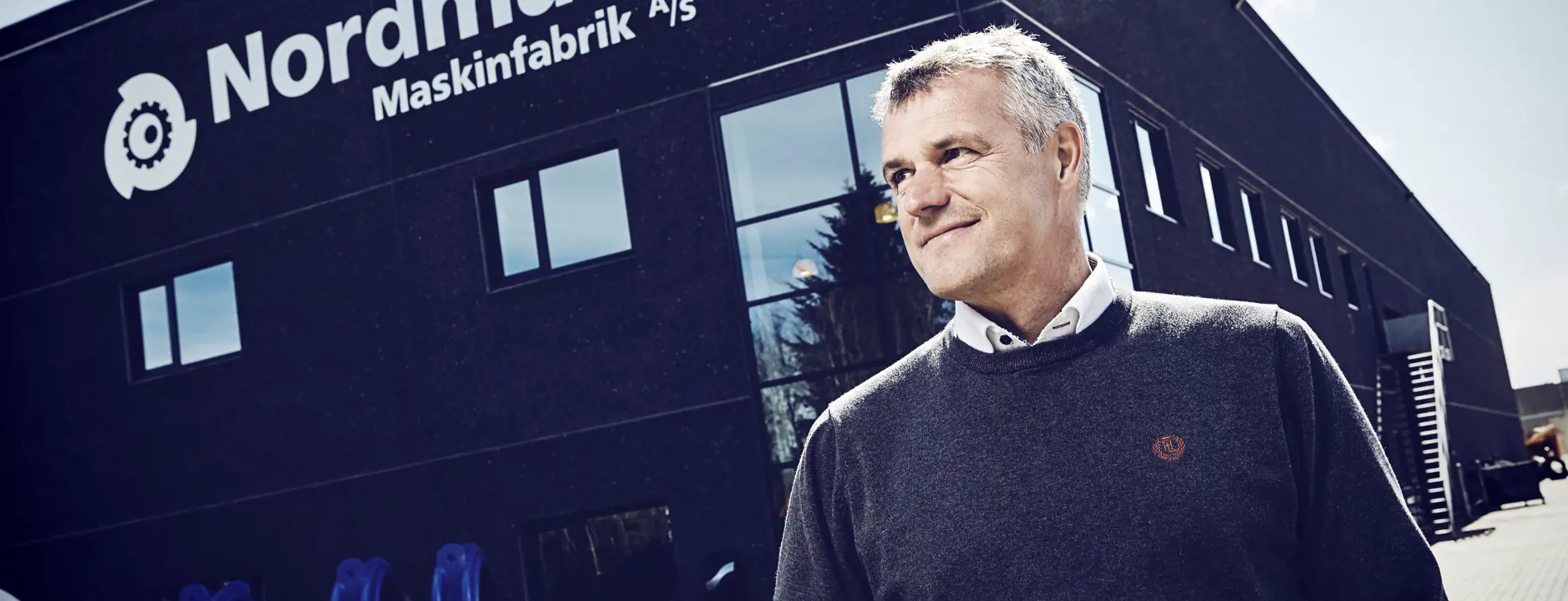
The company, which has three factories in Denmark and Germany, is a major supplier primarily to the wind industry, with customers including giants like Vestas and Siemens. So even though Nordmark belongs to the traditional heavy industry, 80-90% of their deliveries go to green energy, and in that sector, there is a strong focus on ensuring that supply chains are green. This includes requirements for Nordmark to be able to report how much CO2 they emit and how much waste they generate. Achieving this requires having the right tools and employees who follow established procedures.
Therefore, in the fall of 2021, Nordmark reached out to the Business Development Centers (Erhvervshusene), and the entire framework around the concept of green transition was defined, with a spotlight on the company's green potential. This led Nordmark to participate in the Green and Circular Transition (GCO) program, and with the assistance of a private consultant, they developed their green business model.
"The biggest 'a-ha' moment was realizing that where we can truly impact our CO2 emissions is by reducing the amount of errors. We process items weighing 20 tons per piece. If we process an item incorrectly, it's cut into small pieces, and a new one has to be cast. So, the biggest impact we can make is to reduce such errors to a minimum," said Morten Mørk, CEO of Nordmark.
In addition to the obvious economic costs of making such errors, they also have a significant impact on the company's carbon footprint. The first CO2 baselines are already in place in the company, but there is still a long way to go before Morten and his team can proudly claim to be green. Achieving this requires a wholehearted effort from both Nordmark itself and its partners.
"As we move forward, we are influenced from various directions. We know that it's necessary to have our own house in order before we demand standards from our surroundings. Our ambition is, therefore, to report our CO2 emissions in an internationally recognized reporting system," said Morten Mørk, CEO of Nordmark.
Specifically, this means they now need advice, employee training, and the acquisition of a new environmental management system. Therefore, it is evident to Nordmark that the next step is participation in the SMV: Green program, which provides opportunities for subsidies for consulting, employee development, and the purchase of environmental management systems.
Acceleration of the green transition:
The focus on sustainability is not new. The 6,500 tons of metal shavings generated by Nordmark annually have always gone directly to recycling, and they are willing to go the extra mile to ensure they end up in the right recycling bins.
"We discuss green focus with employees down to their everyday actions. Regardless of the type of material, the goal is to transform and minimize waste into new resources. A screening process in the fall showed that we could significantly reduce CO2 emissions by switching to green energy. Therefore, in the fall of 2021, we decided to negotiate a new green electricity agreement, so now Nordmark purchases green electricity from Danish wind farms starting from January 1, 2022."
Encouraging others to do the same:
If Nordmark is to remain competitive and a major supplier to the wind industry, the premise is that they must continuously stay updated and qualified to be part of the game. It's no longer enough to be ISO 9000 certified; now, there are requirements for green company profiles and environmental certifications, and falling behind can be costly.
"Nordmark won't survive the next 10 years if we don't keep up with the green development. It's simply our license to operate. At some point, we'll be left behind if we don't meet the industry's requirements and standards. Once you're excluded, it's a struggle to get back in. It's easier to fight to stay in," says Morten Mørk.
Therefore, he has no doubt that all companies, regardless of the industry, should start their green journey now.
"If you're passive and wait, there will always be others who, at some point, define the direction you should go. But if you're involved from the beginning, you can influence the development yourself," he encourages.
